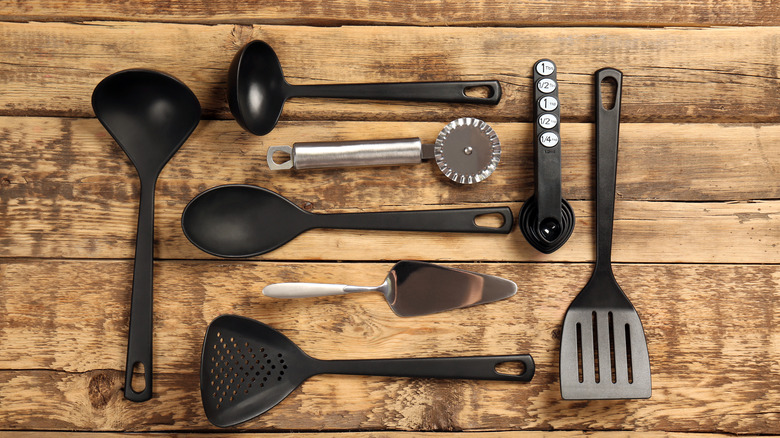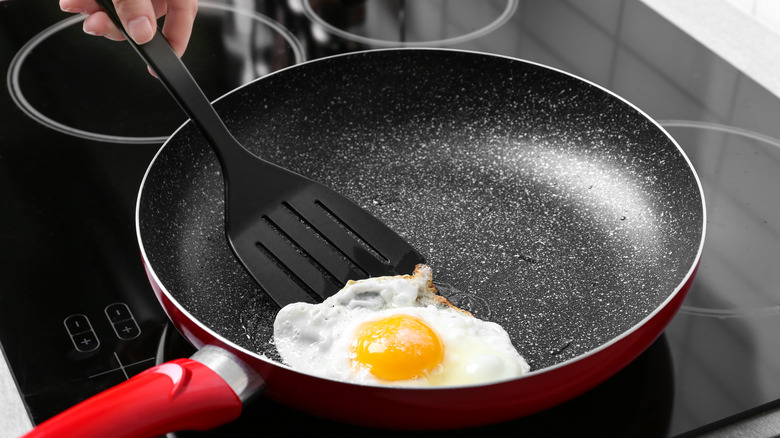What You Should Consider Before Using Nylon Cooking Utensils
So often in the kitchen, it's about having the right tool for the job. When you're on a mission to make the perfect grilled cheese, for example, the spatula you select is determined by your cooking methods and choice of skillet. If you're smashing your grilled cheese, you may opt for a metal spatula so you can apply sufficient pressure, as a silicone spatula may be too flexible. But if you're using a nonstick skillet, those sharp metal edges can damage your cookware, so you may reach for a nylon spatula. Sometimes a spatula isn't just a spatula; it's a carefully selected culinary weapon, chosen for its unique properties.
Each kitchen tool has uses and limitations, and there's no one right material for all tools and functions. Hunker explains that nylon cooking utensils are typically sturdier than silicone and can be manufactured to be thinner than wooden utensils, which makes them better for flipping things like pancakes and fried eggs. But, are there drawbacks to nylon cooking utensils that you should be aware of?
The downside of nylon cooking utensils
In general, nylon cooking utensils are safe, but they do have some limitations when compared to silicone utensils, per Hunker. First, nylon has a lower melting point than silicone, clocking in at about 400 degrees Fahrenheit. If nylon melts, it can cause burns and damage cooking surfaces and cookware. Also, nylon that's used at too-high temperatures will become brittle and can break, creating spaces where bacteria can flourish.
While nylon is considered safe for use in the kitchen, Kitchen Seer points out some of the potentially harmful chemicals in the flexible cookware. The primary chemical of concern is diaminodiphenylmethane (DDM), which has been detected in some black nylon utensils, particularly those made in China. According to the CDC, a few studies have shown that mice exposed to DDM were more likely to develop liver and kidney problems, as well as cancer. There's a concern that nylon, when heated, may release DDM, along with trace amounts of other potentially harmful chemicals. On the other hand, silicone, which has a higher melting point — over 500 degrees Fahrenheit — contains fewer potentially harmful chemicals than nylon (via Kitchen Seer).
These concerns don't mean that you shouldn't use nylon cooking utensils; it means they shouldn't be used at high temperatures, and they should be replaced when they show signs of cracking or breaking down. Most cooks have an assortment of utensils made of different materials, so it's important to know when to use each one to the best effect.

